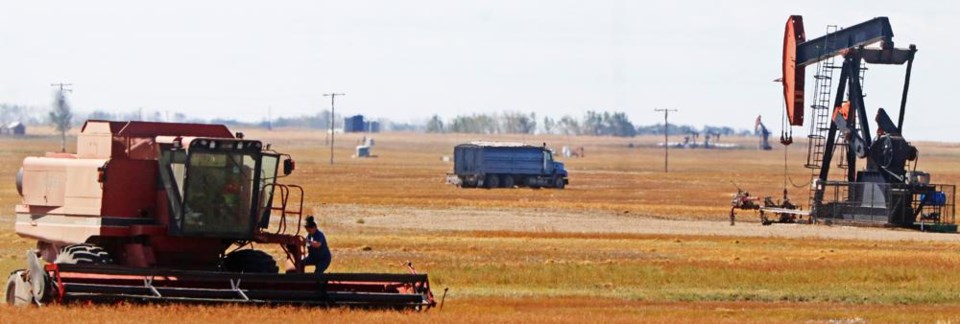Harvest operations continue to progress quickly in the southeast region, with 67 per cent of the crops now in the bin, up from 42 per cent last week, and an additional 17 per cent of the crops swathed or ready to straight-cut.
In the Weyburn crop district (2A), the harvest 72 per cent completed, and in the Radville-Lake Alma area (3ASE), it’s 79 per cent done. Provincially, harvest is 56 per cent completed, up from 36 per cent a week before, with an additional 24 per cent swathed or ready to straight-cut.
Crops are coming off dry and are poor quality overall, with reported yields below average, with some areas reporting less than anticipated yields due to drought conditions and extremely hot weather during critical stages of the growing season.
Broken down by crops for the southeast region, winter wheat has yields of 35 bushels per acre (bu/ac); fall rye has 29 bu/ac; hard red spring wheat has 34 bu/ac; durum has 31 bu/ac; oats had 63 bu/ac; barley had 52 bu/ac; and flax had 19 bu/ac.
Canola crops have an average yield of 26 bu/ac; soybeans have a yield of 27 bu/ac; peas yielded 34 bu/ac; canaryseed had a yield of 1,152 lbs per acre; mustard, 684 lbs/ac; lentils, 1,267 lbs/ac; and chickpeas, 1,191 lbs/ac.
Small amounts of rainfall were recorded in the past week, with nil or a trace in the RMs of Brokenshell and Wellington, 2 mm in the RM of Francis, and a range from a trace to 2 mm in the RM of Laurier.
Fields and pastures in many parts of the southeast remain dry and are in need of a significant rainfall to help replenish both the topsoil and subsoil moisture levels for next year once harvest is completed.
Cropland topsoil moisture is rated as 48 per cent adequate, 45 per cent short and seven per cent very short. Hay and pasture land topsoil moisture is rated as 31 per cent adequate, 46 per cent short and 23 per cent very short.
Winter wheat and field peas are 99 per cent completed; lentils are 96 per cent done, and fall rye is 79 per cent completed with 21 per cent as greenfeed.
Spring wheat is 73 per cent combined with 11 per cent ready to straight combine and 12 per cent is still standing; durum is 80 per cent combined with 11 per cent ready to straight combine; barley is 70 per cent combined, 13 per cent is greenfeed, and five per cent is ready to straight combine; oats are 67 per cent combined with 17 per cent as greenfeed; and canaryseed is 40 per cent combined with 31 per cent ready to straight-combine and 29 per cent is still standing.
Canola is 52 per cent combined with 14 per cent ready to straight combine and 14 per cent is swathed; mustard is 64 per cent combined with 26 per cent ready to straight-combine; soybeans are 51 per cent combined with 49 per cent still standing; chickpeas are 77 per cent combined with 17 per cent ready to straight-combine; and flax is 12 per cent combined with 20 per cent ready to straight-combine, and 66 per cent is still standing.
Crop damage was minimal this past week with strong winds blowing swaths around and some weathering of standing crops that will lead to downgrading. Due to the dry soil conditions, there may be a reduction in winter cereals being seeded this fall as many producers are concerned about their soil moisture reserves for next spring.
Producers are busy combining, baling straw, moving cattle and hauling bales.

